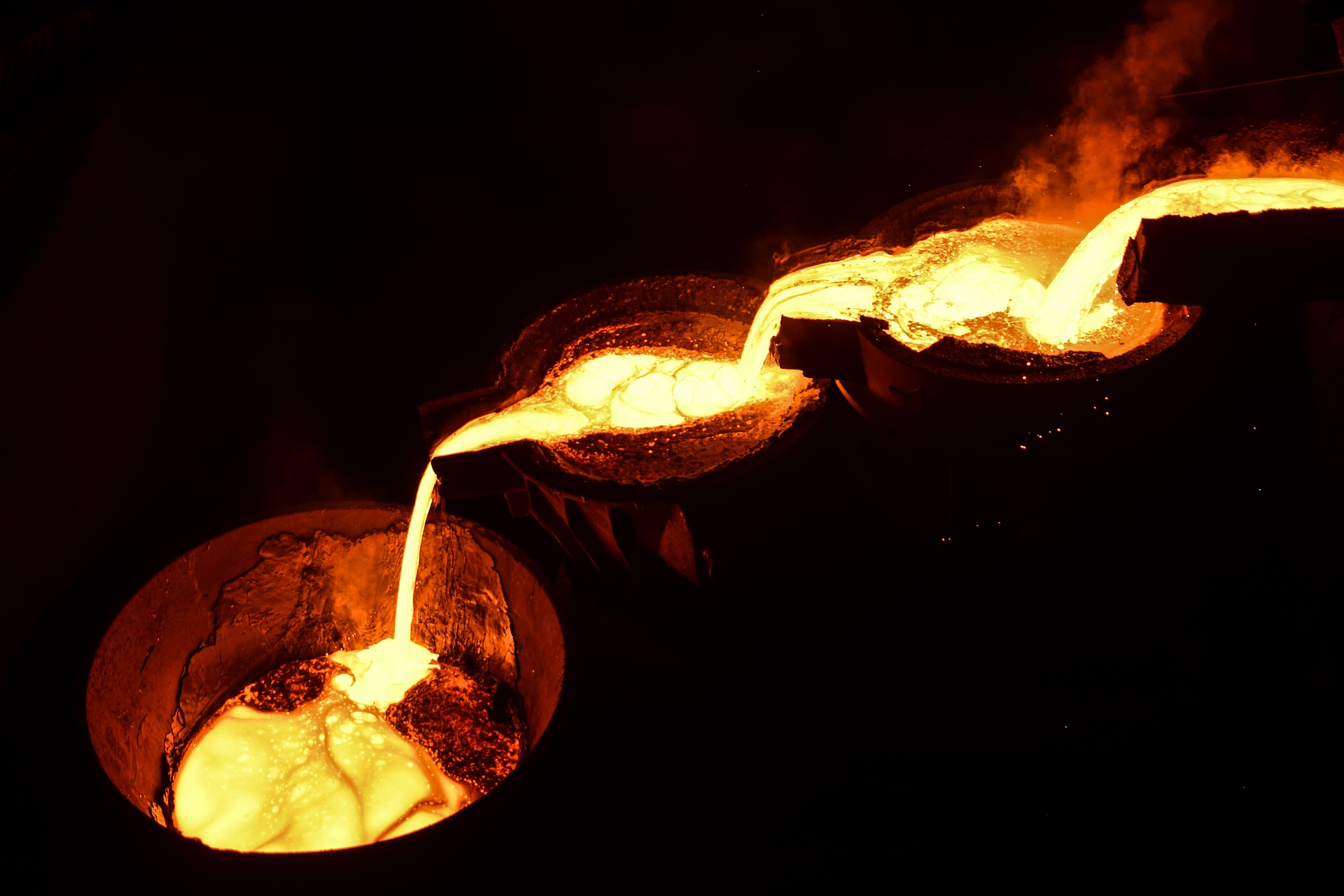Fire-resistant lubricants are fluids that are used in applications and systems where the risk of ignition is high. Typically, these environments are near or contain: open flames, sparks, or hot metals. If an oil leak were to occur, the risk of injury, damage, and even death is magnified as sustained fires can occur. That is why fire-resistant lubricants have been developed and manufactured to protect personnel and equipment.
Why do I need a Fire-Resistant Lubricant?
Fire-resistant lubricants are most needed in environments need high-temperature surfaces and open flames. Regular fluids that have low flash points pose the greatest risks to fire and should be switched for fire-resistant lubricants that have higher flash points.
If using pressurized hydraulic lines, it is key to have a fluid with a high flash point as small leaks can aerosolize the lubricant easily. The lubricant spray is much more susceptible to fire. It takes much less heat to ignite and can spread to fluid reservoirs. The lubricant can ignite if it’s fire point and/or auto-ignition point is reached. The fire point is the temperature at which a fire is sustained and is typically several (50+) degrees higher than the flash point. Opting for fire-resistant fluids with higher flash points will reduce the risk of fire and damage.
Fire-Resistance Fluid Standards
The term “Fire Resistant” and “Fire Resistance” are often misinterpreted and sometimes overused. There is no single property or metric that conveys relative fire resistance. Metrics like flash point, fire point, and autoignition temperature are useful, but do not tell the whole story. Because of this, most fluids are vigorously tested and are classified as “fire resistant” if it can pass various tests and simulations.
The Factory Mutual Research Corporation (FM) developed key benchmarks for testing fire-resistance. FM tests every single commercially available “Fire Resistant” fluid to ensure it meets various benchmarks. FM 6930 is the standard for hydraulic fluids and is classified into 3 levels: 0, 1, and 2. This standard only measures a fluid’s flammability and does not consider other factors of the lubricant.
The Mine Safety & Health Administration (MSHA) has their own tests and standards for underground mines and applications. Their stringent testing produces more failures than FM. Both programs has strict auditing and inspection programs to ensure fire-resistant fluids meet performance standards.
Types of Fire-Resistant Lubricants
Oil-Water Emulsions
There are 2 types of oil-water emulsion fluids: oil-in-water and water-in-oil. Oil-in-water emulsions are formulated with oil droplets sustained in water. Approximately 95% of the fluid is made of water and the remaining 5% is composed of oil. These emulsions have excellent fire resistance and heat-transfer capabilities, but poor lubricity and poor corrosion protection.
Due to these poor lubricity characteristics, water-in-oil emulsions (also known as inverse emulsions) are better performing fluids. These are 40% water and 60% oil. It provides more balance of heat-transfer properties, lubricity, and corrosion protection. The fire-resistance primarily comes from the water, which turns into steam and reduces the oil’s combustibility.
Water Glycols
Water-in-oil emulsions have seen declining market share due to the rise of Water Glycol Fluids. Water Glycols contain 35-45% water and the remaining contents are some sort of glycol, such as ethylene glycol. These Water Glycols offer some benefits such as a lower freezing point and excellent fire resistance. Water Glycols do have drawbacks, but many of these can be mitigated by various additive packages. These fluids can be used in a variety of applications, but speed and strength ratings are reduced due to the limited performance of the fluid. Despite this, Water Glycols are one of the most popular fire resistance lubricants on the market today.
Phosphate Esters
Phosphate Esters provide the best fire resistance properties of any fluid. This is due to their natural molecular structure. They are non-corrosive, have excellent oxidative stability, great anti-wear characteristics, and are suitable for use up to 150 C. Despite this, they have been losing popularity due to stringent compatibility and maintenance concerns. They are still popular for aircraft and military applications. Additionally, they require special seals and coatings and require special care during disposal.
Polyol Esters
Polyol ester fluids have gained popularity due to its fire resistance properties, excellent lubricity, and good viscosity stability across different temperatures. These contain additive packages to impart good performance and high thermal properties. These are much more compatible and versatile than phosphate esters. This has led to their rising popularity and market share in recent years.
Maintenance and Other Considerations
When switching to fire-resistant fluids, compatibility must be considered before restarting the equipment. By carefully draining the machine, this decreases the likelihood of any incompatibility issues.
High-water content fluids require a lot more maintenance and care to ensure they perform properly. Water provides a great medium for bacteria and biocide treatments are recommended to prevent bacteria growth. As temperatures rise, water evaporates and needs to be replaced to ensure the fluids cooling properties are not compromised. pH levels should be monitored along with corrosiveness and wear protection. It is important to follow proper storage practices to maximize efficacy and shelf life.
Like any other oils, fire-resistant fluids degrade in heat and reduce oxidative stability. It is important to note rotating pressure vessel oxidation test (RPVOT) values to ensure your fluid has enough oxidative stability.
Conclusion
Fire-resistant fluids are great options for equipment and environments that are susceptible to fires. If you have high-pressure machines, it is imperative to consider fire-resistant fluids to prevent potential sprays that can ignite. Twin Specialties offers both water glycols and polyol esters to meet your needs. Contact Twin Specialties for product information.

